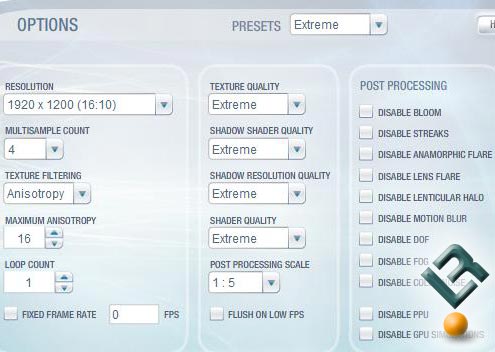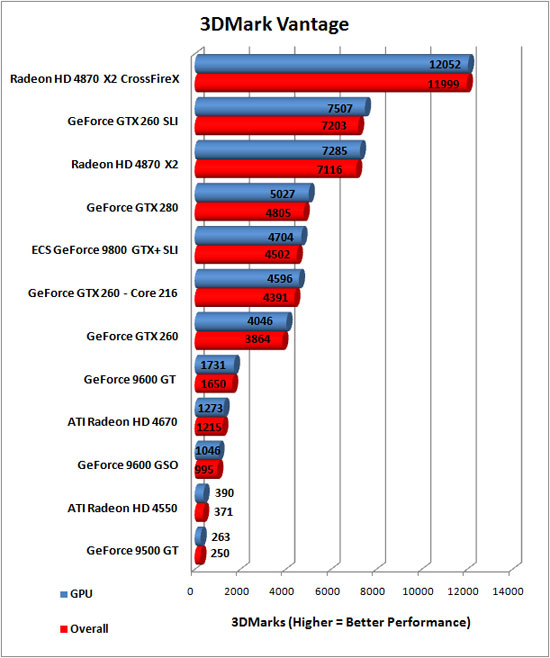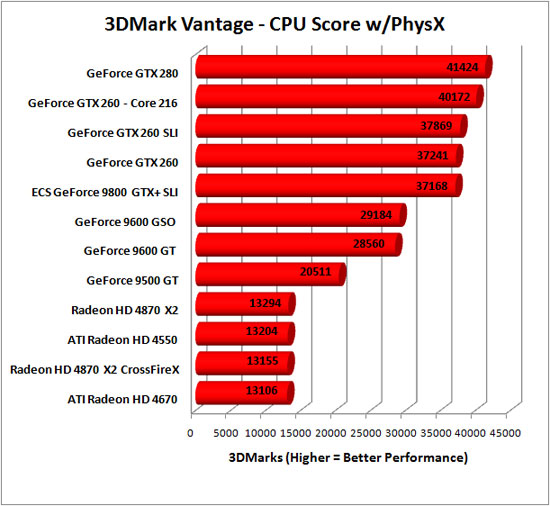AMD’s ATI Radeon HD 4550 Video Card Review
3DMark Vantage

3DMark Vantage is the new industry standard PC gaming performance benchmark from Futuremark, newly designed for Windows Vista and DirectX10. It includes two new graphics tests, two new CPU tests, several new feature tests, and support for the latest hardware. 3DMark Vantage is based on a completely new rendering engine, developed specifically to take full advantage of DirectX10, the new graphics API from Microsoft.

The Extreme settings were used for testing, so a resolution of 1920×1200 was used.
It should be noted that the new GeForce 9800 GTX+ supports PhysX with an additional driver installation. With the NVIDIA PhysX driver v8.06.12 installed along with the Forceware 177.39 driver, the GeForce 9800 GTX, GTX 280 and GTX 260 video cards become physics processors. This new capability extends physics simulation beyond the limited capabilities of the CPU, enabling incredible performance scalability by leveraging the power of the graphics processor. Today you can test two applications to show off PhysX: 3DMark Vantage and Unreal Tournament 3. We tested just the GeForce 9800 GTX+ with the new Physics driver to show off what it means for performance.

Test Results: Running 3DMark Vantage with Extreme settings is very tough on graphics cards, but the ATI Radeon HD 4550 didn’t come in last! The card actually performed better than the GeForce 9500 GT as you can see from the chart above.

Test Results: The newer NVIDIA ForceWare graphics card drivers have PhysX enabled, so the CPU score in Vantage is off the charts since the work can be done on the GPU rather than the CPU. This is the reason that the GeForce cards do so much better than the ATI Radeon cards in this benchmark. All of the Radeon card have roughly the same CPU score since the CPU is doing the work and not the GPU on the graphics cards.

Comments are closed.